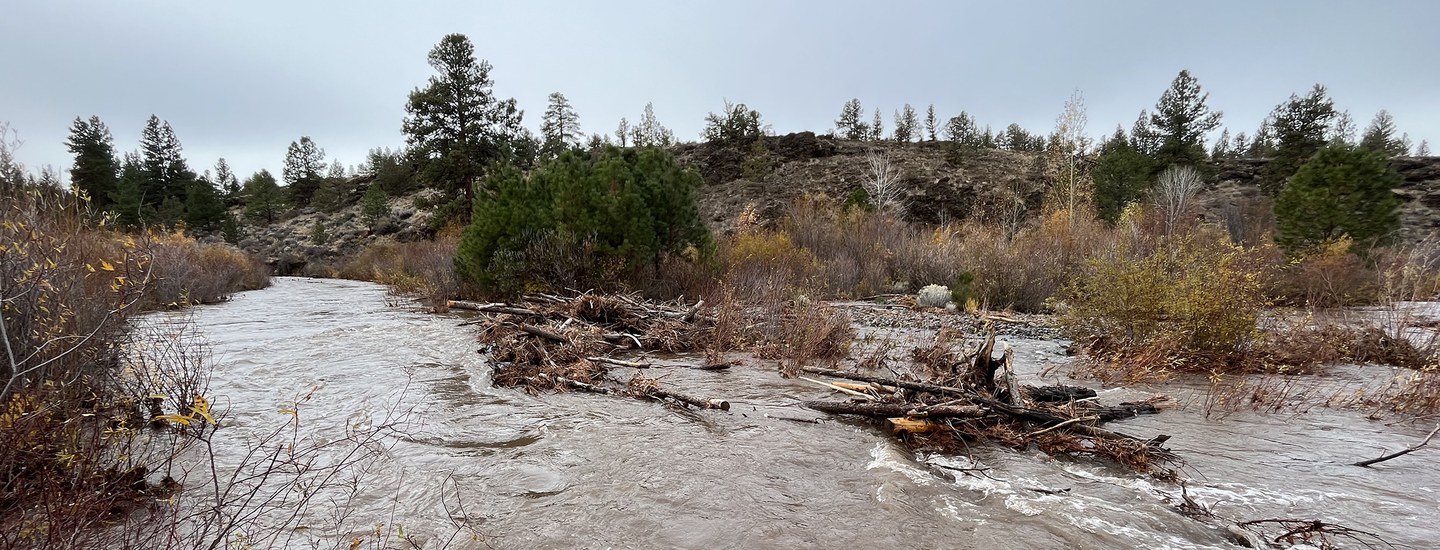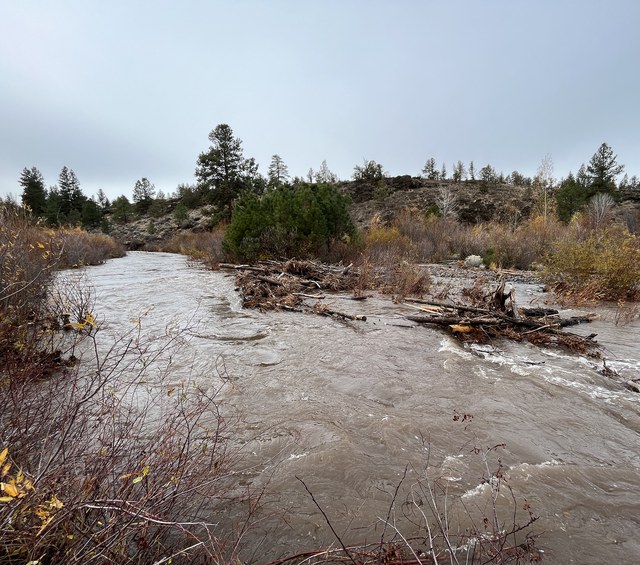In mid-January, Central Oregon experienced a large amount of rain, as well as rain falling on snow, which caused water levels in our local creeks to be quite a bit higher than normal. On Whychus Creek, this burst of precipitation provided a great way to see how the creek would respond in the restored portion that flows through Whychus Canyon Preserve.
Water levels peaked at 550-800 cubic feet per second--almost 10 times more water than is typically flowing in Whychus Creek when it passes through Whychus Canyon Preserve in the winter! In fact, water levels were the highest we've seen since the restoration occurred in 2016.
An initial look at the Preserve while the water was still high showed that the restoration was performing as planned. One of our goals was to help slow high flows by allowing the water to spread across the valley floor into various channels and pathways. The high water levels should also help recharge the groundwater, replenish the soil, and help plants across the valley.
In the photos below, you can see what Whychus Creek looked like in the fall of 2020 compared to mid-January during the high water event. That’s a lot of water!
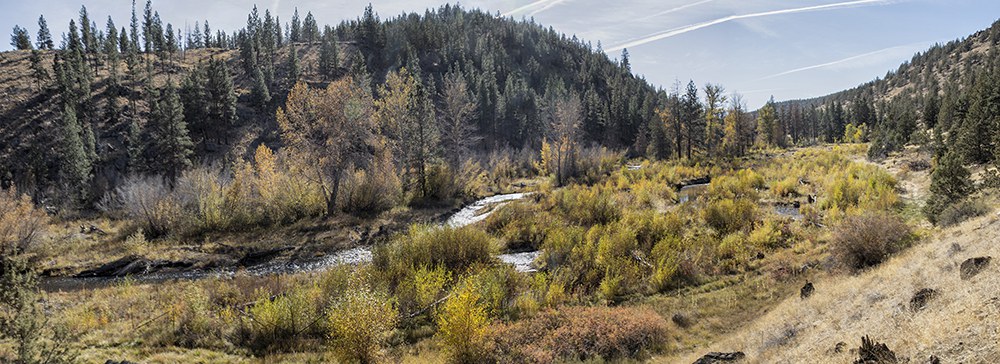
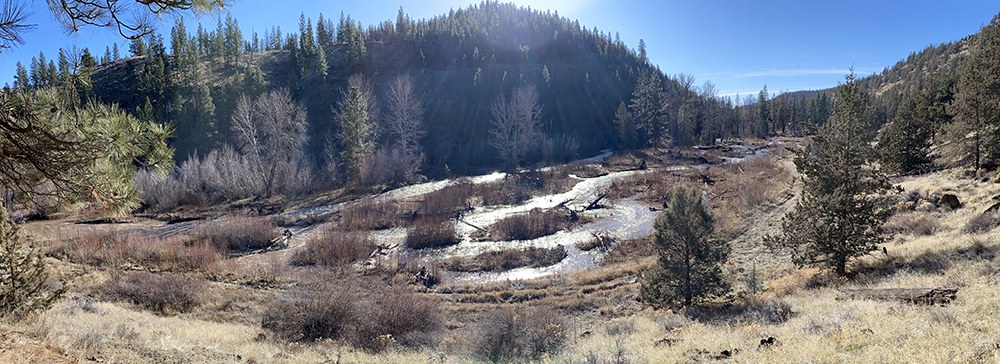
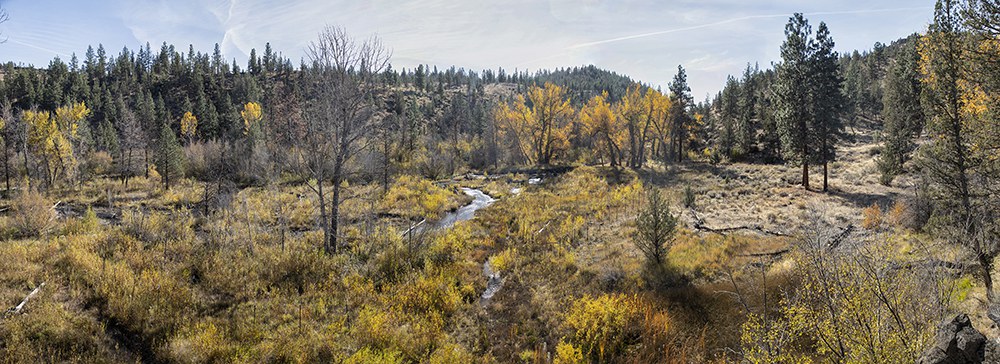
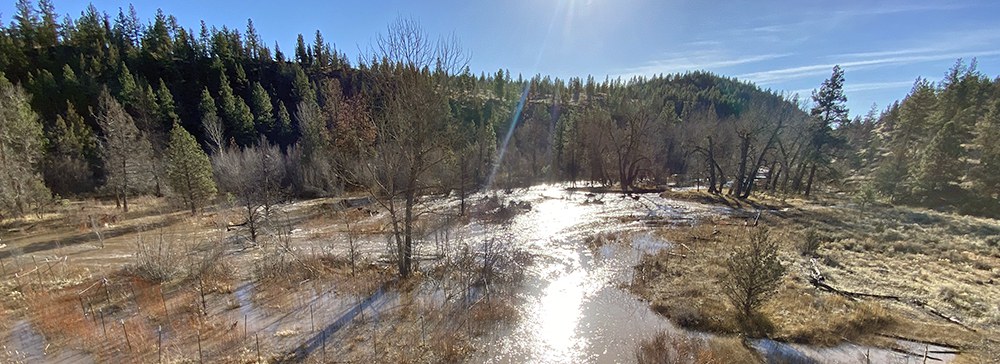
The Land Trust and our partner the Upper Deschutes Watershed Council are hoping to view the restoration area in the coming weeks to get a better sense of how the restoration area reacted to these high flows and what changes occurred. Stay tuned!

